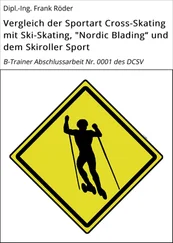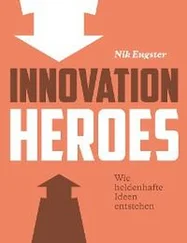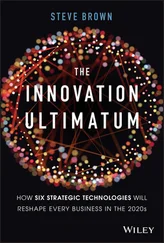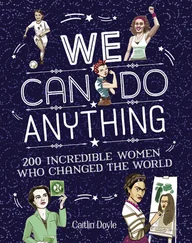The lead user is generally an expert in the activity concerned, but he is also characterized by a willingness to tinker. He may even rationalize the process to the point of creating a “mock laboratory” to test and compare different solutions. He also sometimes seizes the opportunity to use his close circle and/or custom manufacturers to obtain resources. Although important compromises are made at this stage (due to time, money, etc.), this low-cost innovation niche is likely to produce prototypes with novel functionalities. The solutions thus generated are generally shared with other users who will examine them, comment on them, imitate them, test them and eventually appropriate them (modifying and enriching them in the process, in many cases). This sharing, based on a free and generalized free access opposed to intellectual protection (close to the open-source movements (Von Hippel 2013)), is very frequent among most lead users 2. Favoring the dissemination and circulation of knowledge, their approach is not necessarily disinterested because it is the source of symbolic benefits (recognition, notoriety, status) within communities of practice.
By definition, the number of user-innovators is greater than the number of people working in the R&D departments of companies in the sports sector. Beyond the diversity of needs expressed by this mass of sportsmen and women, another element that explains the effectiveness of these communities, in terms of innovation, can be evoked: technical expertise and cognitive diversity are a source of creativity. Von Hippel supports the idea that innovation is all the more effective when it is elaborated collectively; on the one hand, through the successive addition of improvements and transformations made by others; on the other hand, because of the heterogeneity of needs and the capacity of users to imagine solutions to lead to a stable (and generalizable) form of progress. The collective activity of lead users, especially when mediated by structured communities of practice, offers manufacturers a large amount of information about the stated needs, envisaged solutions, and, indirectly, potential markets. This information is all the more useful to manufacturers because it is either unavailable or extremely costly to obtain. Sometimes, companies only have to reproduce prototypes developed and progressively optimized in this way, thanks to the virtues of this “distributed innovation”.
Von Hippel, and a growing number of researchers with him, were particularly interested in sport. The invention and spectacular spread of the mountain bike is an example. In the United States, in the early 1970s, elite sportsmen who wanted to ride off-road and were dissatisfied with the existing bicycles decided to build their own equipment. To get around on rough terrain, they cobbled together bicycles by assembling pre-existing elements (old solid frames, wide tires, motorcycle brakes, etc.). Gradually, these prototypes were taken up, perfected and developed by user-manufacturers, and only then were they recovered and generalized by the bicycle industry (Büenstorf 2003). Subsequently, users have continued to invent new equipment due to the diversification of mountain bike practice (subspecialties according to terrain, practice conditions, modalities – touring, downhill, etc.), giving rise to other unmet needs (Lüthje et al . 2005). In the development of kitesurfing, Franke et al . (2006) have also highlighted the essential role of kite surfers in the improvement (incremental innovation) of equipment, by adapting and diverting equipment, in an iterative and collective way. These authors underline the efficiency of this bottom-up mode of innovation (open innovation, user-centered innovation, or community-based innovation), which is confirmed by the safety improvements obtained in this way in the field of wing safety releases (Hillairet 2012). A study of innovation practices in four sports communities – canyoning, gliding, boardercross and cycling – suggests that, on average, 20–30% of practitioners have already modified or created their equipment (Franke and Shah 2003).
Lead users are sometimes the source of radical innovations, but most often they bring about incremental innovations that are likely, through accumulation and enrichment, to modify products and techniques to a greater or lesser extent. Take, for example, the development of materials and expert gestures in windsurfing in Hawaii (Shah 2000), and the adaptation and stylization of kayaking materials (Hienerth 2006; Hyysalo 2009). Analyzing the emergence and growth of Nordic walking, Pantzar and Shove (2010) also mention the need to take into account, alongside lead users, ordinary users whose role is somewhat underestimated. In this respect, the description of food techniques in different forms of sports itinerancy illustrates the great creativity of even the most ordinary sportsmen and women: repackaging, using things for different purposes, fashioning things themselves, etc. (Boutroy and Vignal 2018).
Beyond the questioning of the monopoly of innovation capacities held by industrialists alone and the demonstration of the specific functioning of lead user communities, the essential contribution of the LUT is to show how companies can be inspired and fed by users’ achievements. Cases of co-production with lead users are not rare. This process of open innovation provides manufacturers with a wealth of information on the contexts of use, which would be difficult to access by other means (for example, a series of formal tests). In this respect, user creativity is a positive externality for the commercial world, which may have an interest in developing processes of innovation through use.
1.2.2. Innovation through use: user participation
Making the user a partner in innovation is not a new idea. The approach is the result of the observation that 80 to 90% of innovation attempts (whether they be products or services) end in failure. There are many different approaches to innovation that implicate users (innovation through use, user-centered approach, etc.). Whatever the favored one, innovation is thought of as an iterative and whirlwind-like process, during which a good, a service or a process encounters users, or not. The challenge is, of course, to encourage this adoption.
Faced with the order to innovate, recourse to the sociology of uses (Akrich and Méadel 2004) makes it possible to accompany the action, particularly in the case of disruptive innovations (Cardon 1997). The user then becomes a kind of useful resource for innovation actors (designers, marketers, etc.), as they can reduce risks by testing and validating ergonomic or technological choices as early as possible, for example. Ultimately, it is a matter of optimizing the creation of value and ensuring its perception. Any reusability is only possible if the user is interested in the object or service, and if we can verify that its use makes sense in his daily life. This perspective reflects renunciation into technical determinism, whereby the user is no longer considered a passive being nor a docile absorber of an innovative proposal.
Research on usage shows that usage does not exist in a desert of use and that the adoption of a good, in particular, is built around previous techniques and practices (Mallein and Toussaint 1994). Use is also social, since it develops over time and often comes up against the resistance of the social body and the weight of habits and tradition, which regularly thwart the diffusion of innovation (Perriault 1989). The value of the innovation is thus constructed by the meaning of favorable uses.
Depending on the approach, the question of usage can be raised at certain key points (usage-based approach) or during each of the major phases of the innovation process, that is anticipation, design, adaptation and adoption (user-centered approach). For each of these phases, specific tools from the human and social sciences and dedicated devices (places of interaction, co-creation platforms, test prototypes and usage analyses) are deployed in order to anticipate the technical requirements of users and their social and cultural anchoring. Finally, these methods allow for concrete tests, within the ordinary environment of practice, in order to study the ways of doing things, the resistances, and also the new configurations employed (appropriations, other uses or “misuses”).
Читать дальше












